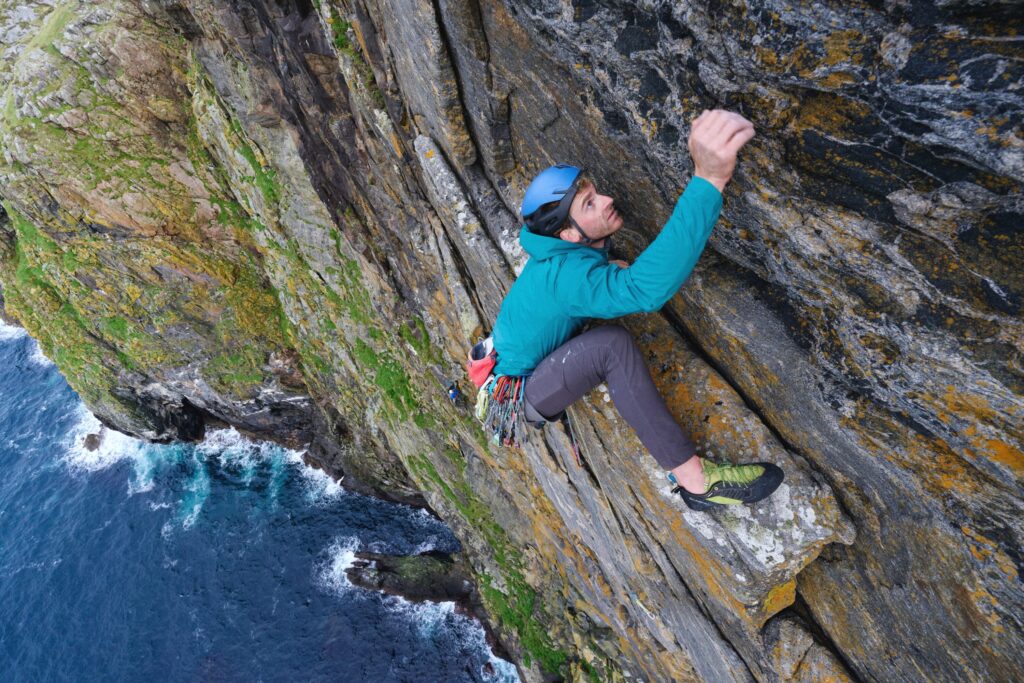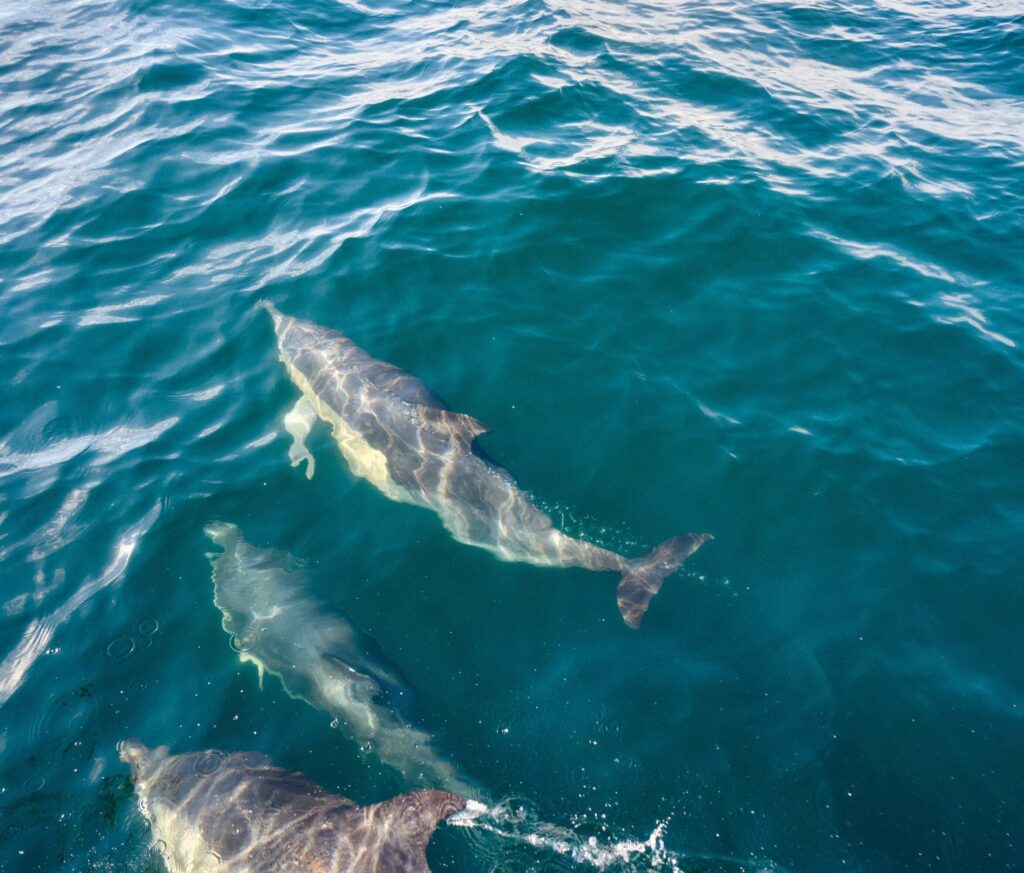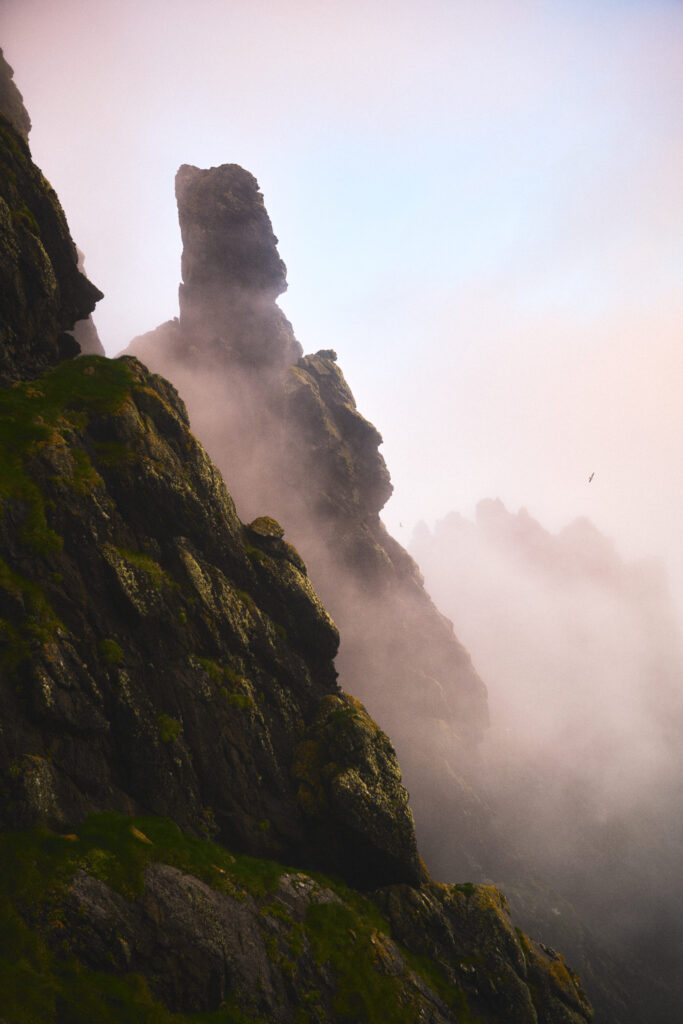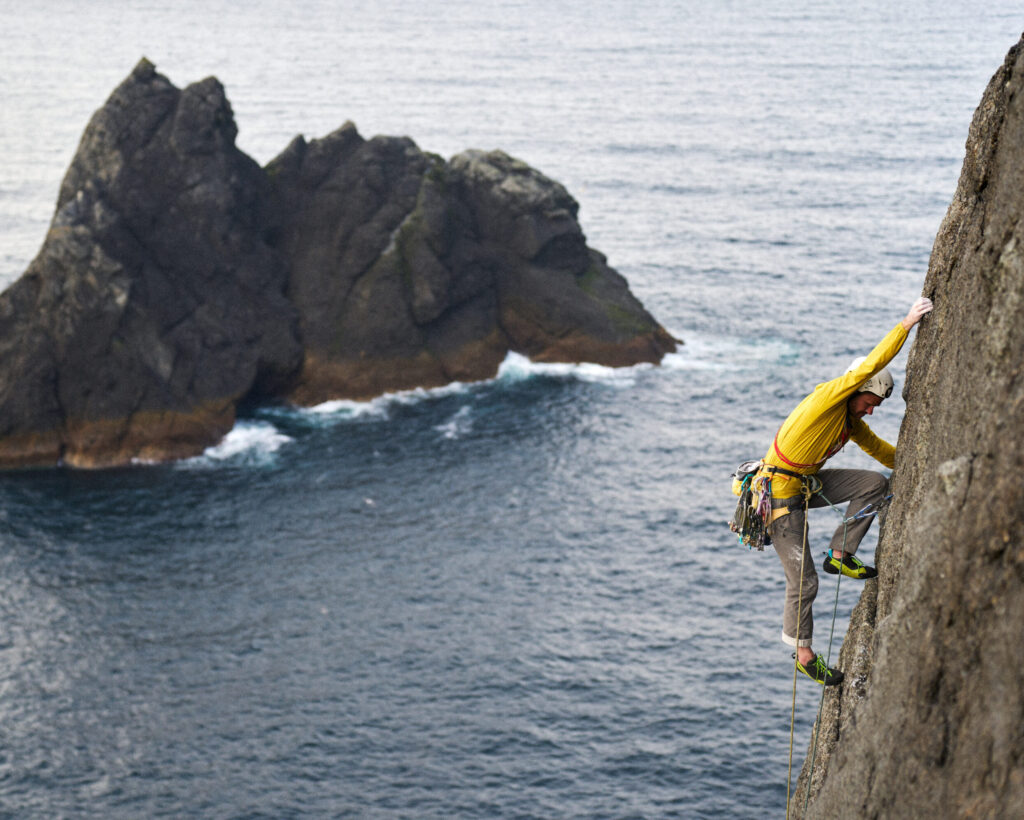Home Story Atlantic Rock: New Routing In The Outer Hebrides
Atlantic Rock: New Routing In The Outer Hebrides
Feature type Story
Read time 6 mins
Published Mar 09, 2023
Author Will Birkett
Photographer Hamish Frost
The Outer Hebrides are famous for their dense populations of rare seabirds that nest in the imposing rock faces of the islands’ cliffs. Most will observe these craggy formations and their inhabitants from a distance, and from the relative safety of a boat. But in September 2022, a crack team of climbers set sail for St Kilda, the westernmost point of the British Isles. Their objective: to establish new routes on the tallest sea cliffs in the United Kingdom.
Avian flu, inclement conditions and rough seas meant the odds were stacked against them, but as Will Birkett recounts, sometimes fate favours the bold.
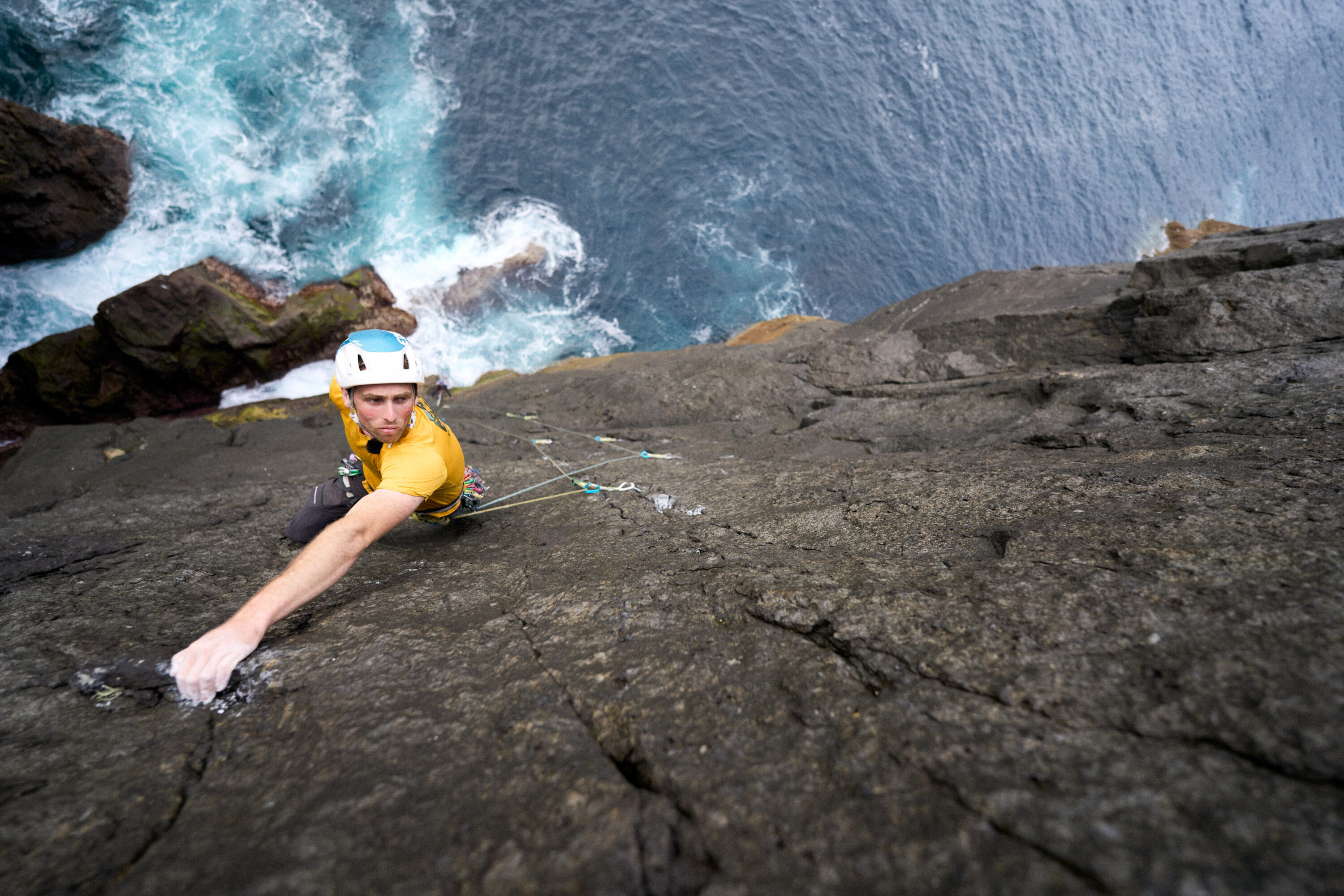
Is there even any point in going? It’s an unusual statement for a plan more than a year in the making. But like a lot of plans, this one hinged on the unseen; those subtle unpredictable tremors on the periphery of our own personal little bubbles.
Avian influenza was the simmering issue, one that had just begun to boil over, spilling onto these best-laid plans. Nature Scotland had just put out an advisory notice to stop public landings on Soay and Dùn, two of the main islands a team of climbers had pegged to explore.
Early Thursday morning, I was at work when I received a voice message:
‘Hey dude, it’s Robbie, hope you’re well. I don’t suppose you’re free for a climbing trip to St Kilda are you? Guy hurt his elbow and we might need an extra climber. Only thing is, we leave tomorrow. Once in a lifetime trip!’
How could I resist? But now it seemed this spontaneous sojourn could come to an end before it had even started.
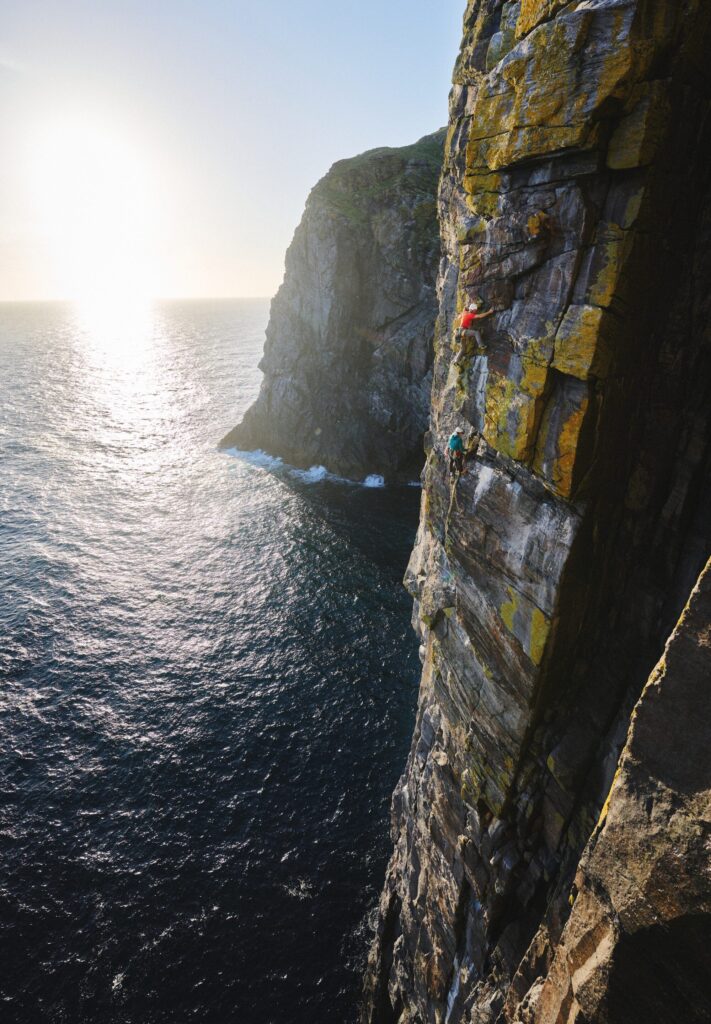
Guy, Robbie and Will climbing a new route as the sun sets on the cliffs of Bernaray
The Outer Hebridean islands are world-famous for their marine and avian wildlife, from the docile Leach’s petrels which inhabit Dùn’s grassy slopes to the great skuas (or bonxies, as they’re sometimes called), famous for their kamikaze tactics when defending their eggs, while fulmars, gannets and guillemots all crowd the surrounding cliffs, making power plays for the best ledge to lay their eggs upon during nesting season. St Kilda alone hosts in excess of a million seabirds, boasting 210 different species. Climbers however, know these islands for a different reason.
Bands of dark and light patterned gneiss and gabbro characteristically flow through these cliffs, formed by ancient geomechanics of intense heat and pressure. The fingerprints of a chaotic pre-human world are stamped on these fantastic bullet-hard cliffs. The violent thrashing of the Atlantic Ocean against these unique formations leaves the cliffs cleansed of all loose rubble and king lines are to be found on many of the 100+ metre rock faces. But many of these lines remain unclimbed. Not least due to the islands’ remote location and the general foul nature of Scottish weather systems as well as the inherent challenges posed by nesting season.
Our team of five consisted of Robbie Phillips and Guy Robertson, two pioneering professional climbers of their respective generations, and adept mountain sports photographer Hamish Frost – collectively forming the Scottish contingent – our lithe sea captain Charles Smallwood, and me.
When your time on islands such as these is limited, it helps to be paired with some of the best adventure trad climbers in the world.
We first sailed to Barra Head, also known as Berneray. Tilted on its axis as if a giant had sat on its northern aspect, sinking half the island while simultaneously raising the other half up, this is the most southerly island of the Outer Hebrides. Its largest cliffs stand proud at 200m and the flawless gneiss form steep, oppressing corners flaked in vivid yellow algae that protrude uninterrupted, straight from the seabed.
When your time on islands such as these is limited, it helps to be paired with some of the best adventure trad climbers in the world.
The first day, myself, Guy and Robbie spied an unclimbed line on the right hand side of the crag known as Giant’s Pipes, taking a stone pillar directly up the face. Robbie negotiated patches of seeping saltwater to lead the best pitch of climbing I had seconded all year. From a thinning crack to rounded smears and obscure, undercut power moves through a stepped out roof, continuing up pockets and crimps to a belay some 58 metres above the swell.
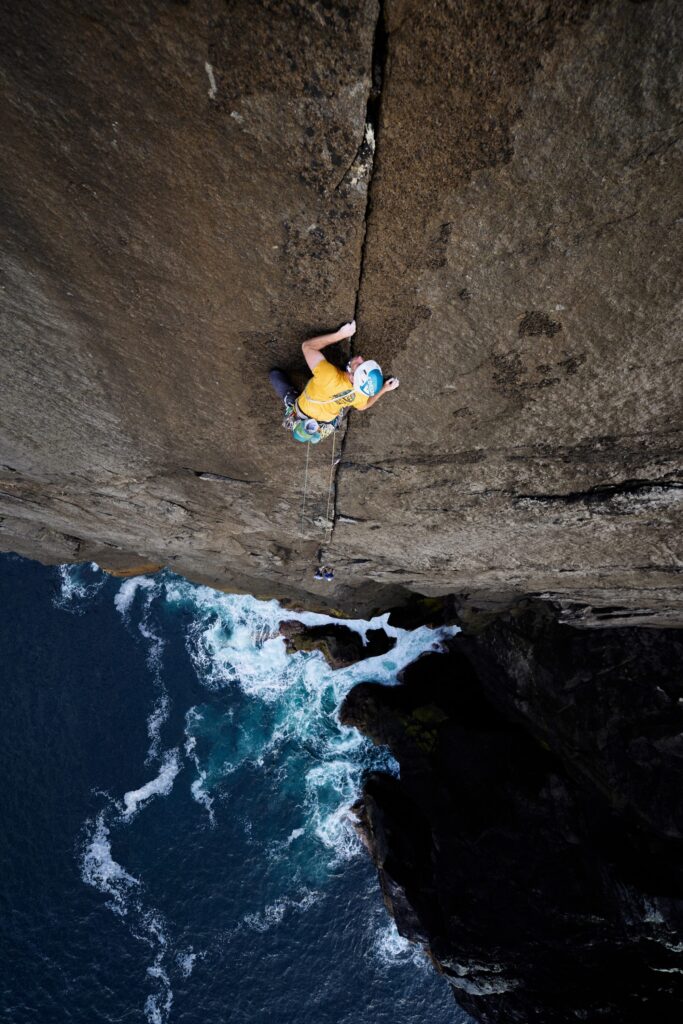
Robbie Phillips climbing a perfect gabbro splitter crack during the first ascent of ‘The Last Queen of Scotland’ on the cliffs of Soay
The following day, splitting into two teams, Hamish and Guy bagged two new climbs on a stunning, previously untouched face whilst Robbie and I smashed through the overhanging roof of a sea cave just left of the Giant’s Pipes – throwing his weight between blocky smears and rounded hand holds, Robbie was in his element.
You could imagine the route description as it would appear in a guidebook:
Immaculate climbing above good but spaced gear.
Abseiling down to a ledge above the crashing ocean swell and releasing the static rope into the wind is the very definition of commitment. We don’t end up in these places by accident of course, but for the lust for adventure. With no phone signal and no rescue party, we hoped Charles knew where to find us.
The night before, the Atlantic swell had raged several metres high as a purple dusk merged the sea and sky, welding them together into one large blank canvas of dark unknown. When the wind ferociously bit at the jib and mainsail Charles, cool as ever, fought with the helm to keep us on course as the yacht named Half Light leaned what felt like 180 degrees into the sea. I had positioned myself on the side of my rotated seat and accepted whatever fate lay before me.
‘On a scale of one to ten, how serious was that?’ Guy asked Charles.
‘Oh I don’t know, somewhere around a three I suppose,’ was his reply.
It certainly didn’t feel like a three to any of the four non-seafaring climbers who were just thankful not to have been lost at sea. As it turns out, a boat like that is practically unsinkable. Even if it capsizes it would self-right, but as a novice climber may believe that E1 is the living end, we believed we might drown that night. Well, at least three of us felt that way; throughout all of this, Robbie was lying face down in the front cabin, inebriated by seasickness tablets and mostly unaware of any drama at sea. He had suffered badly on the trip from the mainland and continued to feel sick with any motion of the boat.
The main attraction of climbing Outer Hebridean sea cliffs in September is that the nesting season is finito. Once our feathered friends have fledged their cliff ledges, the options of ascendible rock are greatly increased. So naturally, looking for new lines at this more unsettled time of year made far more sense, even if the forthcoming autumnal weather might throw some curveballs our way.
Prior to our arrival on Hirta, we had been in touch with the Scottish National Trust, so we could discuss climbing on the islands of Soay and Dùn, both of which had been badly affected by avian influenza. When we arrived in the bay, we radioed across to their permanent base on St Kilda to arrange a meeting with the wardens in person. Our expectation was that they’d fob us off, but to our surprise they were extremely personable and helpful and we were soon given the go-ahead to climb on the sea cliffs of Hirta, Soay and Dùn as it was outside of nesting season. So long as we accessed the base of the cliffs and left the same way via the sea, it was highly unlikely that we would disturb or even come into contact with the birdlife. They also asked that if we did see any bird remains that we take photos and report back each day with any finds. Elated that not only could we climb on our desired cliffs, but that our climbing expedition had been upgraded to an ecological survey, we went forth and looked for crags.
We remained in regular contact with the wardens on Hirta. Most days we would radio across or visit in the dinghy. One warden named Chris had mentioned in passing his recent acquisition of a racing pigeon who had likely been blown off course was now refusing to fly away. He fed it every day but was worried it would meet an untimely end if it stayed on the island much longer, and that equally if sent back to its owners they might themselves kill it. After some debate back on board Half Light, we ended up with guardianship of said pigeon. We named him Charles and he became a sort-of mascot to the trip, patiently minding the boat from his window view.
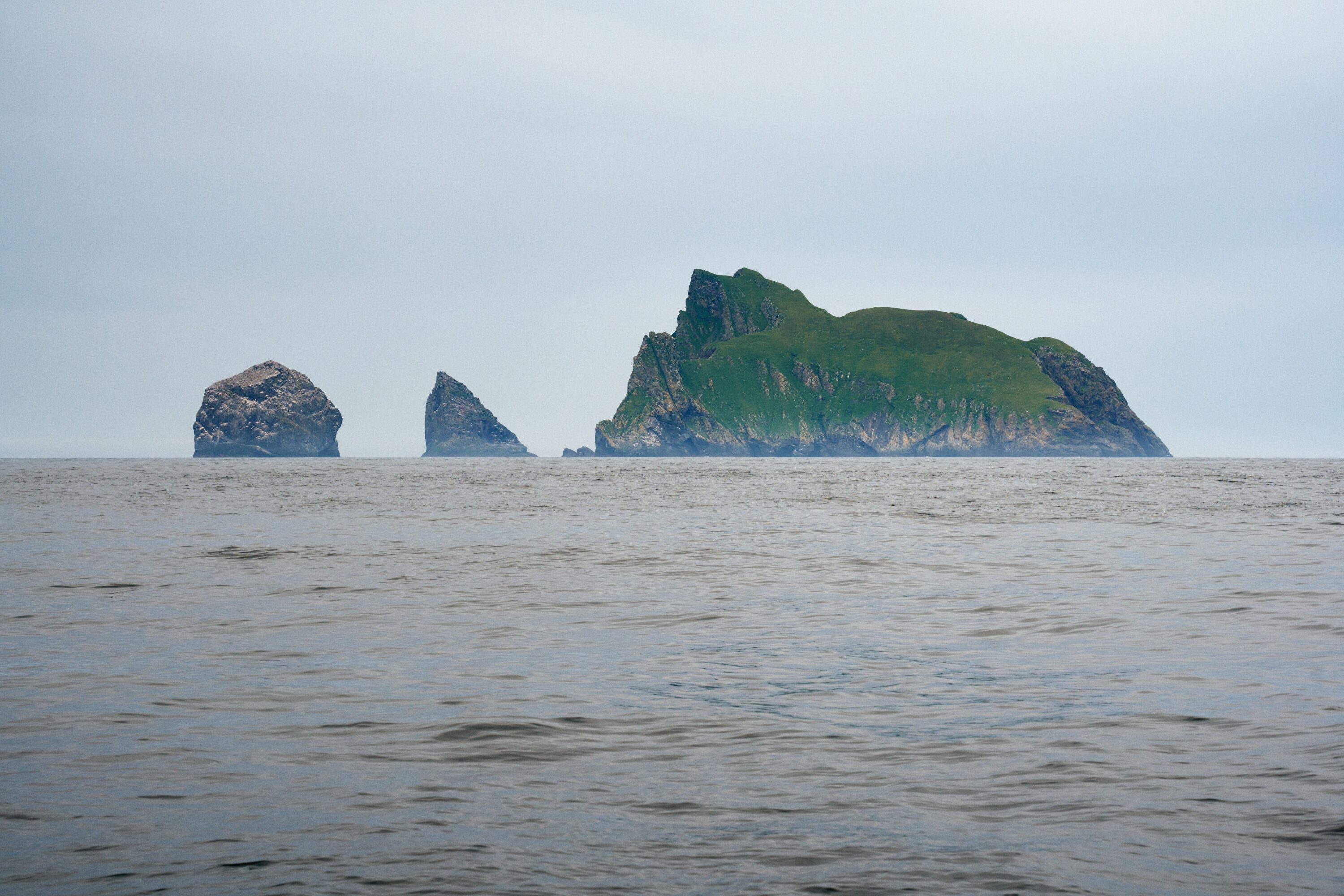
The island of Boreray and the sea stacks, Stac Lee and Stac an Armin
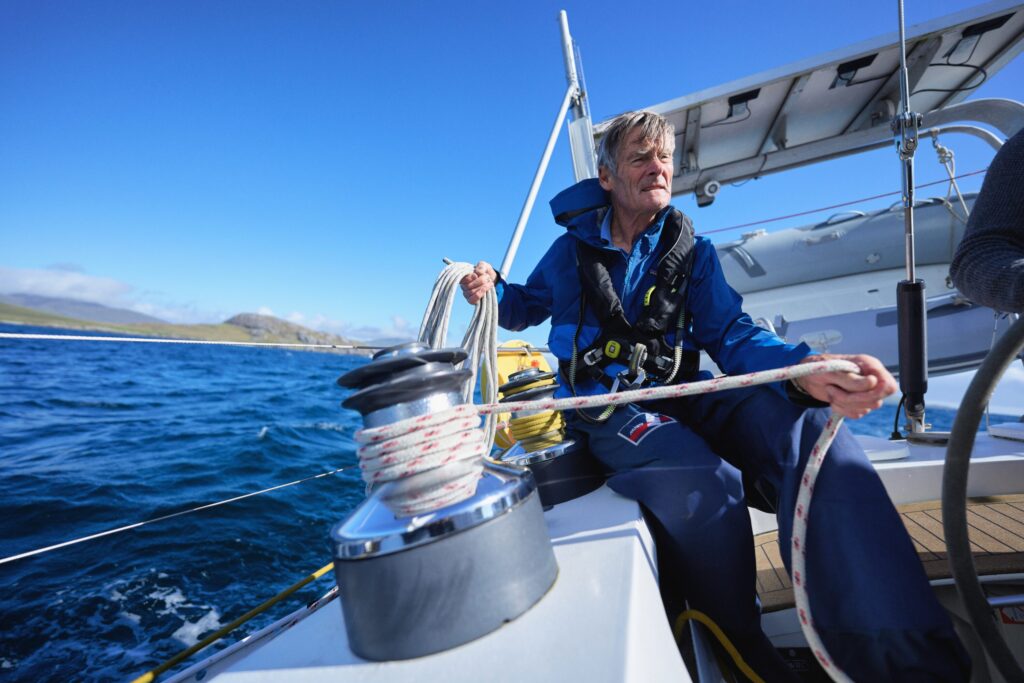
Charles Smallwood, captain of our boat, ‘Half Light’
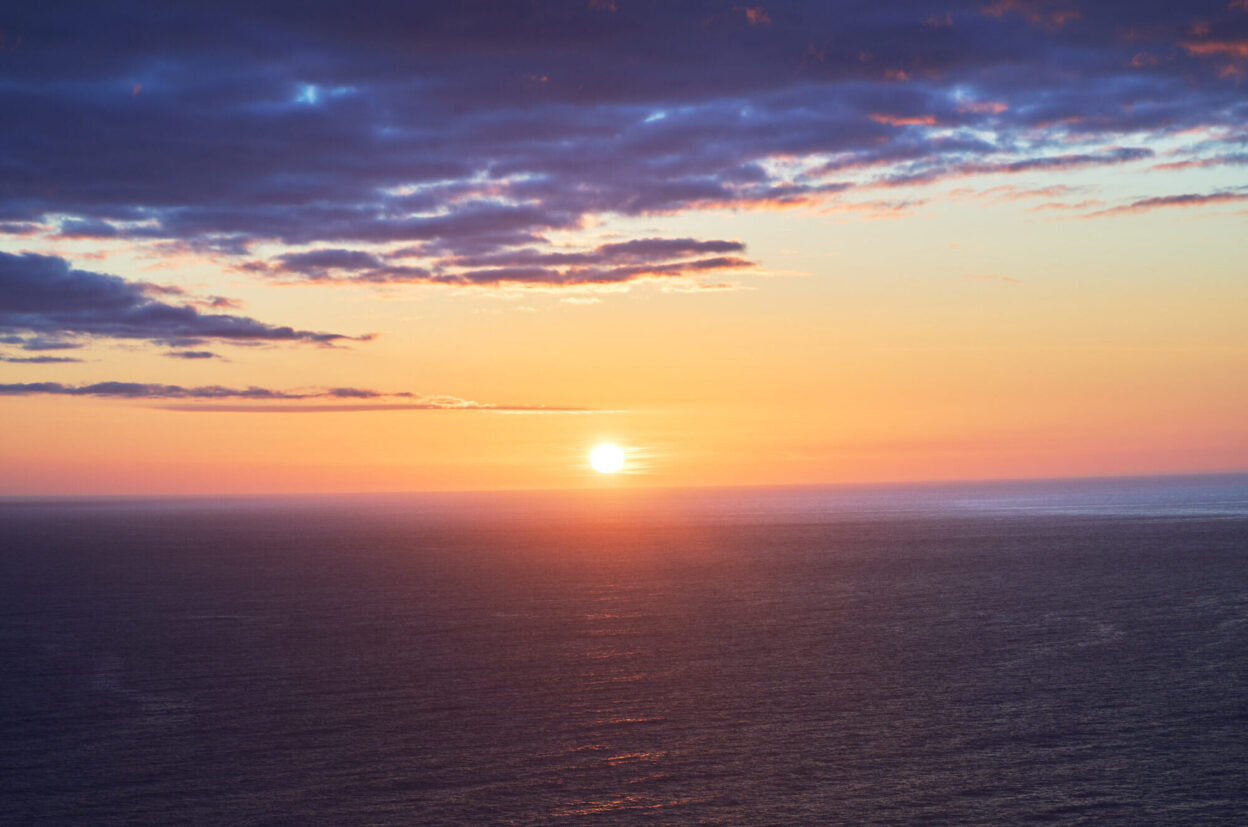
The sun setting over the Atlantic
Yikes, is this it?
As we sailed around the archipelago anticlockwise, gigantic walls of jagged, vegetated gabbro blackened by a millennium of ocean waves loomed above us. Like some sort of Jurassic island, we half expected to see pterodactyls circling above us. Impressive, but nothing worth climbing. It wasn’t until the west banks that we found gold, first spying a huge, clean face around 130 metres high with two king lines; a right and left crack spanning almost the entire length of the crag. As more of the south westerly aspects became clear, there looked to be gems everywhere – some real treasures to behold.
Guy and I went to climb the left hand crack on the behemoth sea wall, topping out shortly before nightfall. It was a smooth execution until the last pitch when a looming patch of dark fog started rolling in from the sea. The last 30 metres of gabbro crumbles slightly under a weighted foot and just after taking the lead, Guy shouted up: ‘You’d better go faster, it might rain any second!’ Run-out and exposed, we beat the night to the top – just.
To make any sort of crag assessment we’d all pile into a rubber dinghy, also captained by the fearless Charles Smallwood. As Charles steered the dinghy, shuttling Guy, Hamish, Robbie and I onto our chosen craggy, seaweed-laden landing slip, Half Light was left bobbing in the nearby froth of the sea. From here we had to sync our timings with the swell; leaving it too long meant that the dinghy would be mispositioned by the sea, get impatient and the swell could suddenly drop a few metres leaving you to scrape down barnacle-encrusted rocks and into the drink. Charles would then buzz back to Half Light and we would later reconvene. This whole process felt quite addictive, each time looking nervously forward to a bigger swell to test our mettle.
Like some sort of Jurassic island, we half expected to see pterodactyls circling above us.
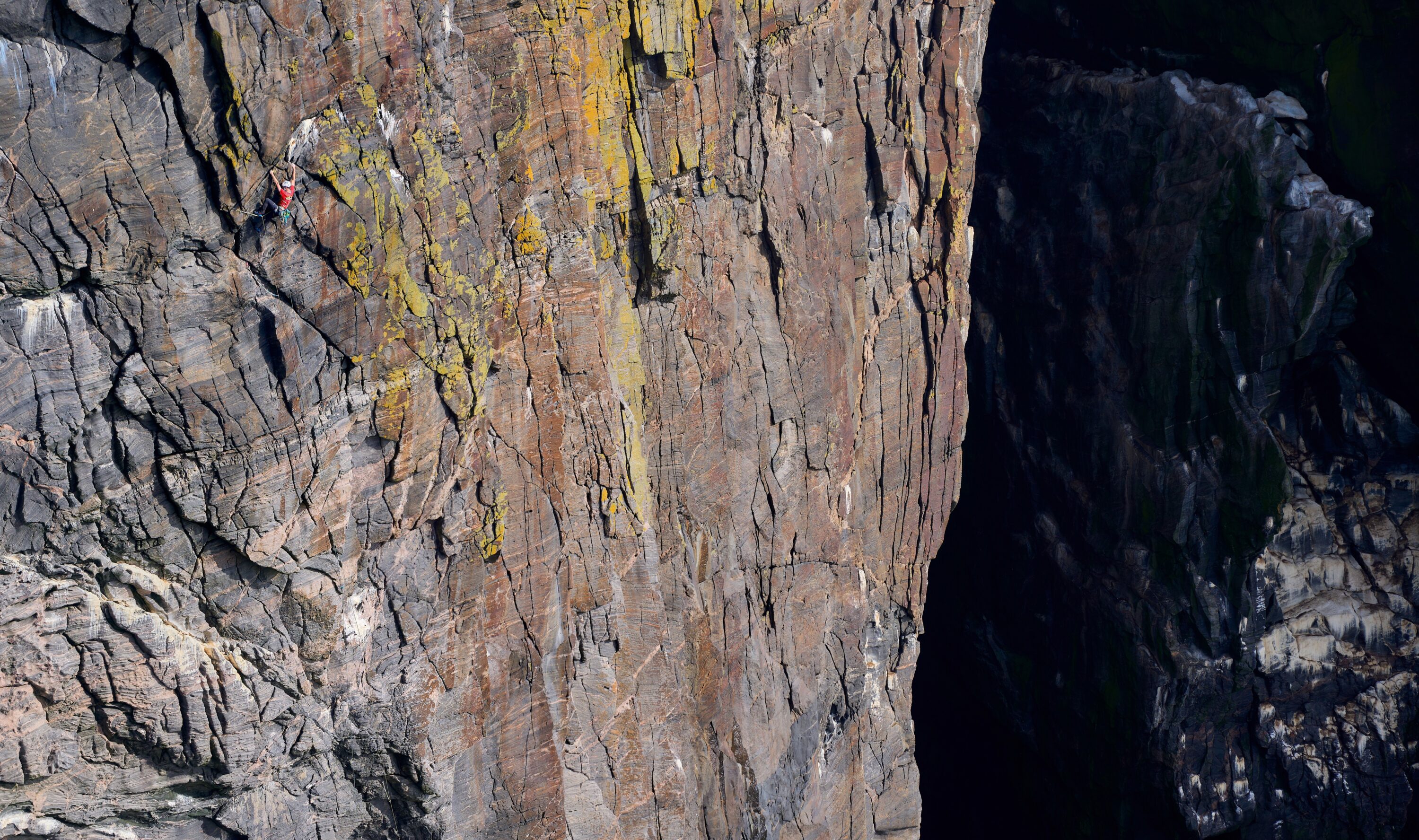
The islands’ remote location and unforgiving weather systems mean many lines remain unclimbed
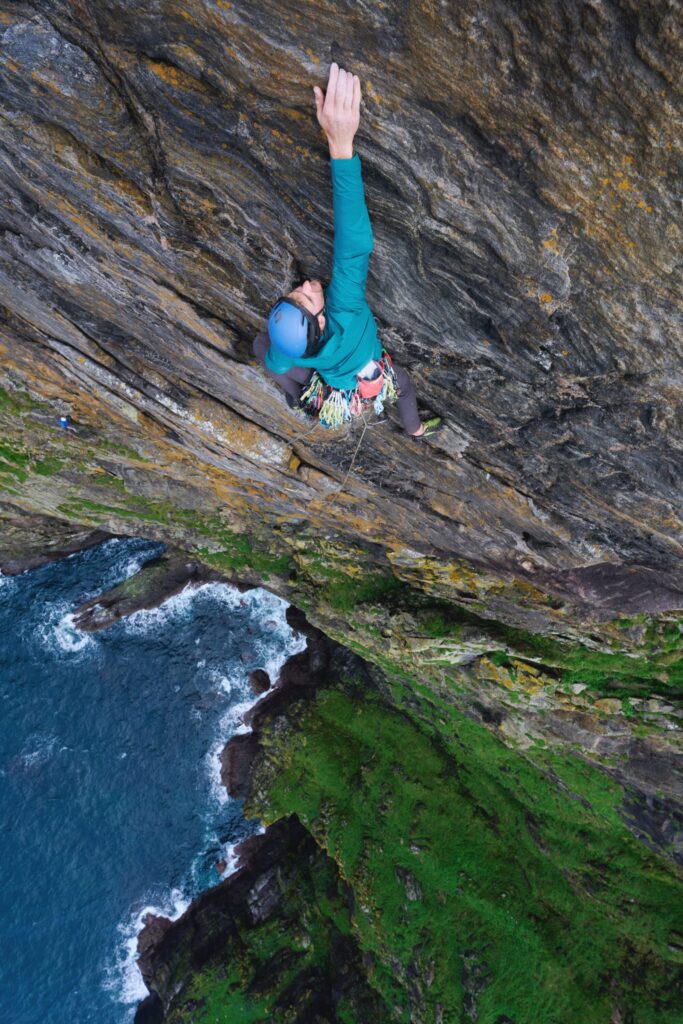
Will Birkett fighting the pump on the steep wall of Creag Dhearg, Mingulay
following a continuous crack through roofs and wonderfully steep, clean ground, the route rivals anything I’ve climbed in Yosemite.
The epitome of our landing escapades was accessing the Dùn wall. Robbie and Charles set off to scope out a potential landing point and to our horror, would momentarily disappear behind the huge rolling swell. At a guess, it was 3-4 metres high and it felt big. To the relief of the team looking on from the boat, Robbie somehow timed his jump with the swell to reach land successfully. Guy and Hamish made the perfectly sane decision to sit this one out, opting instead to find more sheltered waters and accessible climbing. Despite the knowledge that Charles might not be able to rescue us if the swell increased, I made the moral decision to follow Robbie onto the rock. And fate, it seems, favours the bold and we put up a new line of the highest quality: following a continuous crack through roofs and wonderfully steep, clean ground, the route rivals anything I’ve climbed in Yosemite.
Charles’ warning of rough seas reigned true as we huddled for warmth on a ledge ten metres above the sea, waiting for Half Light to emerge. When finally she did, our options were fairly dire. We set up a pullable line, dangling into the sea at the only point the swell might not capsize the dinghy. The vessel was hurled up and down against barnacled rock as Charles, with steely eyes, manoeuvred to get us off the cliffs.
‘I don’t think I’d like it to get much more exciting than that,’ I later heard Charles say. Which I think is the equivalent of anyone else saying that was some serious shit!
We weathered the final part of the trip on the island of Mingulay, one north of Berneray. The island too boasts an array of fascinating wildlife. Seals play and howl at all hours along the golden sandy beach, and a plethora of birdlife nests along its cliffs, some seasonally and some year round.
Regular showers rolled across the sea occasionally drenching us but we climbed when we could. Guy and Hamish found a whole new unclimbed sector over 100 metres high and quickly bagged an incredible looking 5 star route, climbing roofs, cracks and walls. Robbie and I spent a bit of time swinging around on Dun Mingulay, and eventually Robbie smashed a new E8 up through the roof left of Big Kenneth that hosted a surprise second pitch delaying our ascent and finishing in the dark.
I feel honoured to have had these experiences with these amazing people in such a wildly beautiful place, on what was truly a once in a lifetime trip.
But what happened to the pigeon? I hear you say.
After his epic journey back to the mainland, Charles the pigeon found himself driving to Edinburgh with Robbie. There he was rehomed in a pigeon sanctuary to live out the rest of his days eating seeds and hanging around with his own kind, safe from the perils he once oversaw from his bolthole onboard Half Light.
This story first appeared in issue 09 of BASE magazine. Subscribe for FREE to make sure you’re among the first to read every issue.
Don’t miss a single adventure
Sign up to our free newsletter and get a weekly BASE hit to your inbox
You might also like
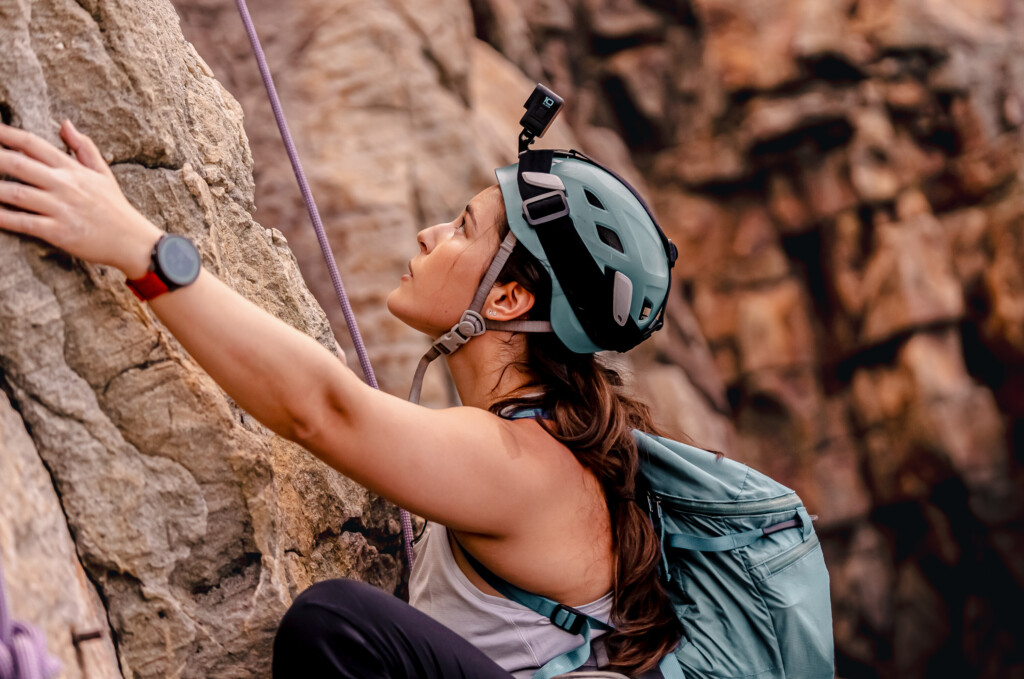
Photo Essay • BASE editorial team • Mar 18, 2024
Hunting happiness through adventure in Taiwan
BASE teams up with adventurer Sofia Jin to explore the best of Taiwan's underrated adventure scene.
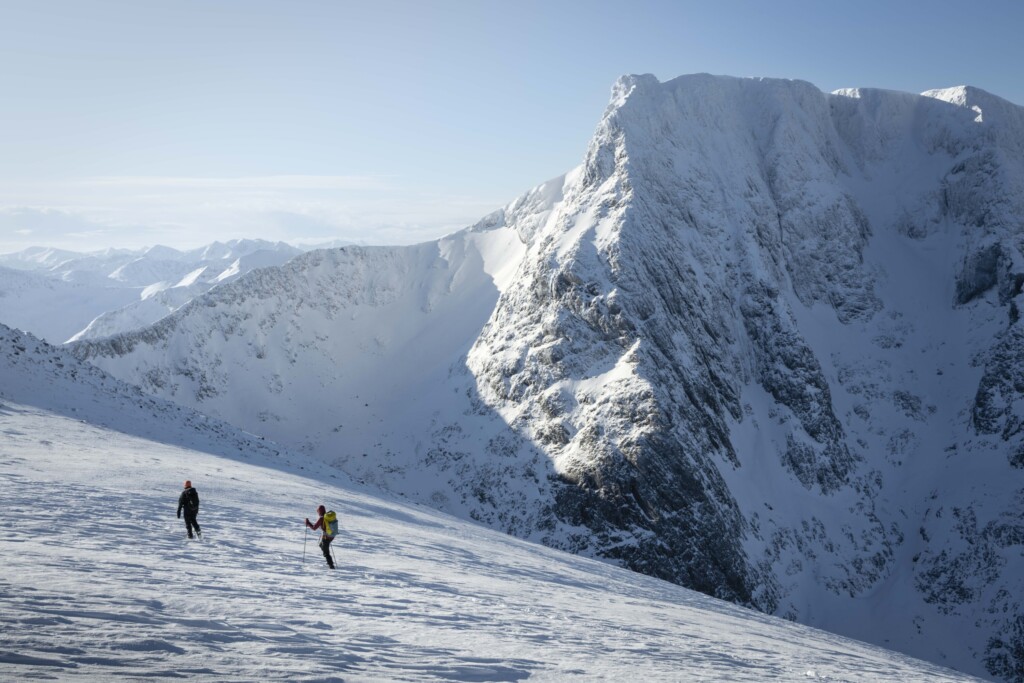
Story • BASE editorial team • Nov 21, 2023
Five Epic UK Climbs You Should Try This Winter
Craving a snowy mountain adventure? Inspired by the Garmin Instinct 2 watch (into which you can directly plan these routes), we've compiled a list of five of the best for winter 2023-24!
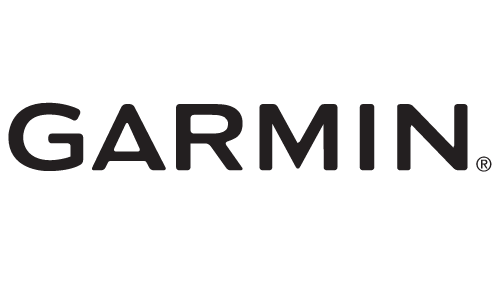

Video • BASE editorial team • Jul 04, 2023
Zofia Reych On Bouldering, Life And Neurodivergence
Climbing is a driving force in Zofia's life, but for a long time, it also seemed to be a destructive one
